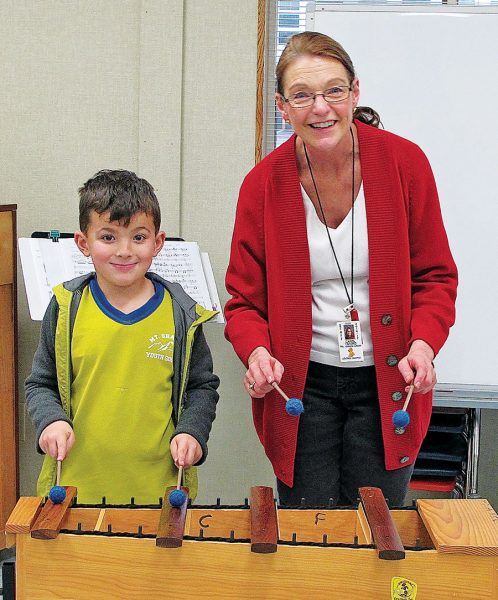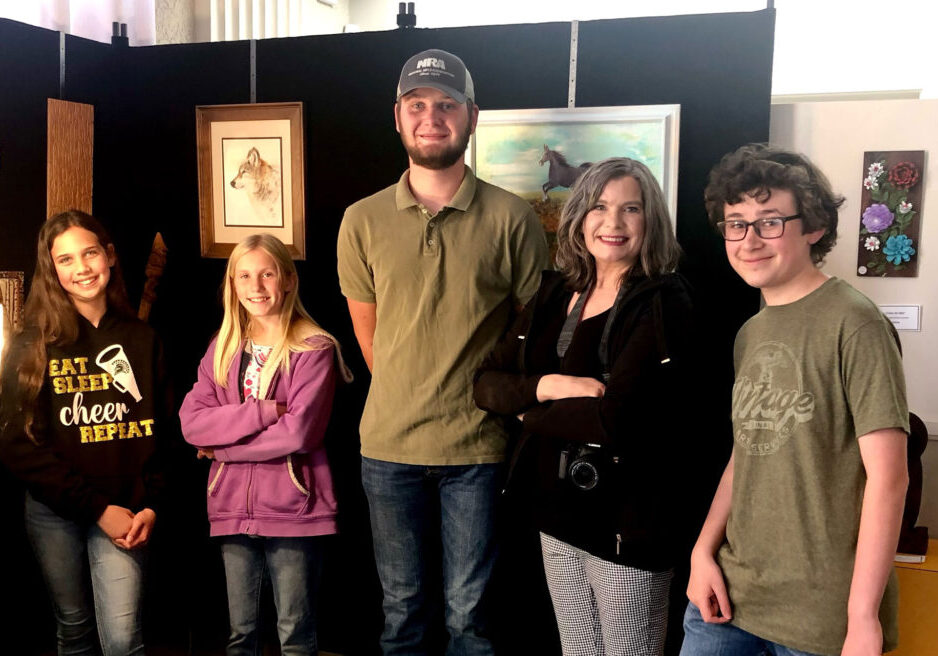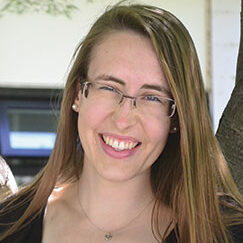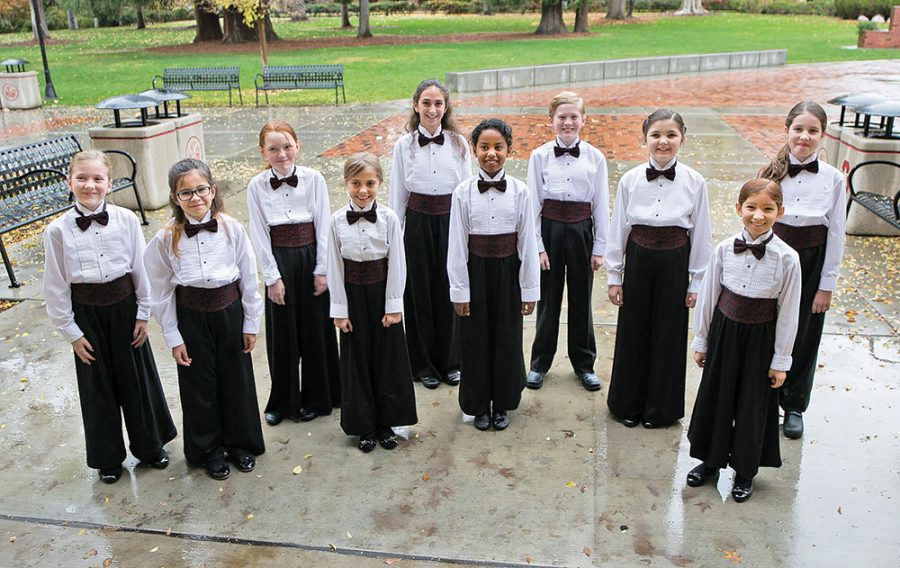 What’s a team activity that doesn’t occur on a court or field? Singing. Mt. Shasta Elementary School’s music program and the Children’s Choir of Chico, though two very different arenas, cultivate children’s love for singing, capitalizing on the many social, emotional and developmental benefits of singing in a group.
What’s a team activity that doesn’t occur on a court or field? Singing. Mt. Shasta Elementary School’s music program and the Children’s Choir of Chico, though two very different arenas, cultivate children’s love for singing, capitalizing on the many social, emotional and developmental benefits of singing in a group.
Mt. Shasta Elementary School Music Program:
When Carol Taforo’s family moved from San Leandro, California, she began volunteering as a music teacher at Mt. Shasta Elementary school where she had enrolled her young sons. “My boys loved music,” Taforo explains, “so it was important to me as a parent that they had early musical opportunities, even in a small community.”
Taforo went back to school to become a certified teacher in the Kodály method of music education, developed in the 1920-50s by Hungarian musician Zoltán Kodály. The Kodály method grounds music instruction in singing, viewing the voice as the most accessible instrument, and draws on folk music to promote a “music-literate society.”
Taforo’s students sing American folk classics about animals, trains, and coming out west. They learn tunes like “Skip to My Lou,” “This Land is Your Land,” and southern spirituals that carried slave workers through backbreaking labor. For one such song, “Pick a Bale of Cotton,” Taforo scattered cotton balls across the floor for the kids to gather as they sang, creating a sense of how singing helped slaves pace their tired bodies in the heat of the day.
Songs like this illustrate Taforo’s purpose of the program: “So much of what we do goes far beyond music,” she says. “This is kinesthetic learning about history, culture, math, social behavior and more – all through the musical door.”
The Kodály method emphasizes children’s production of their own music, so Taforo starts her students with Orff instruments, a class of wooden instrument developed specifically for teaching young children. Students also learn to keep beat and rhythm with their bodies and drums, advancing to recorder and guitar as their skills develop.
Beyond making music, Kodály’s method helps children learn to read and write music even as they learn to read and write words. Before they develop the fine motor skills needed to wield a pencil, children move notes into position on a magnetic board or stand on a music-staff floor mat in the proper position to represent a given note.
Taforo says music research indicates that while music skill-building occurs over a lifetime, musical aptitude develops before the age of 8 or 9. “Don’t wait to teach music,” Taforo says, “there’s a lot that kids can do when they’re young.”
Children’s Choir of Chico:
In 2003, two years after Susan Tevis formed the Children’s Choir of Chico (CCOC), Barbara Burkett’s daughter joined Cantiamo, a division for children in fourth grade and up. Two years later, despite the word “children” in its title, CCOC expanded to include Bella Voce, a choir for adult women. This new choir made it possible for mothers, like Burkett, to pour themselves into song.
Burkett joined Bella Voce 12 years ago and currently serves as the choir board’s president. Under Tevis’ continued direction, CCOC welcomes not only children and moms in Chico, but all children and adult women in both Butte and Glenn counties. The main prerequisite: to love singing.
The choir currently offers five divisions, largely based on age range, with tuition ranging from $43-$78 a month. The majority of the choirs accept anyone interested in developing their vocal skills. “In this age of American Idol, which picks up on natural talent, we’re a school of vocal music training. In that way, we’re kind of counter-cultural,” Burkett remarks.
Any student who spends time with the choir can learn to sight-read sheet music, sing as part of a whole, and use excellent technique to protect their vocal chords while producing their best sound. Like Carol Tafaro of Mt. Shasta Elementary, Tevis follows Kodály methods to teach singing. Younger children learn music experientially, memorizing pertinent hand signs or movements to help them internalize concepts of rhythm.
Bel Canto, a CCOC division for serious vocal students in 8th to 12th grades, does require auditions. In June, 11 Bel Canto students will travel to New Orleans for the Crescent City Choral Festival, an annual four-day event. Both before and after the festival, the choir will participate in service projects that contribute to the ongoing restoration of New Orleans, which is still recovering from Hurricane Katrina. To support this venture, Bel Canto will host several fundraisers.
Back at home in the North State, all CCOC choirs will perform in two spring concerts May 14 and 21, as well as debut “Chico Idol,” a two-part singing competition April 1 and May 7. These fundraising events, open to the public, will help keep the choirs alive and strong to carry on their music lessons. To find out more call (530) 342-2775 or visit http://www.childrenschoirofchico.org.
As Burkett says, “Singing carries physical, social and emotional benefits. Singing in a choir brings a special kind of teamwork and fellowship.” And their collective vocals do not just benefit the children of Mt. Shasta Elementary or CCOC. Using Taforo’s adjectives, children’s “light, free, pretty” voices, united as one, impart the blessing of singing to anyone listening.
Posted in: Art & Music, Community
Comment Policy: All viewpoints are welcome, but comments should remain relevant. Personal attacks, profanity, and aggressive behavior are not allowed. No spam, advertising, or promoting of products/services. Please, only use your real name and limit the amount of links submitted in your comment.
You Might Also Like...

Paint Your House from Prep to Finish
Does your home’s exterior need a facelift? Painting your house doesn’t have to cost an arm and a leg. A bit of prep work and a fresh coat of paint […]

Nurturing Gratitude In Your Home
Take a gratitude break to calm everyone down and gain a new, more uplifting perspective. Get a Happiness Boost Gratitude is one of the most important ways to get a […]
For Children with Autism, Being Social Begins with Thinking Social
We can be blunt with each other here. Kids with autism or Asperger’s frequently stand out as social oddballs. The heartbreak it causes, to the child and to the parent, […]

Education through the Arts with Diane Penner and the Tehama County Arts Council
April is here and the call is going out for Castles and Kingdoms, the 2023 theme for the Student Art Contest sponsored by the Tehama County Art Council (TCAC) and […]




